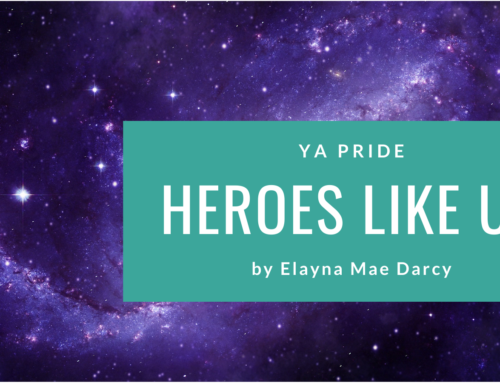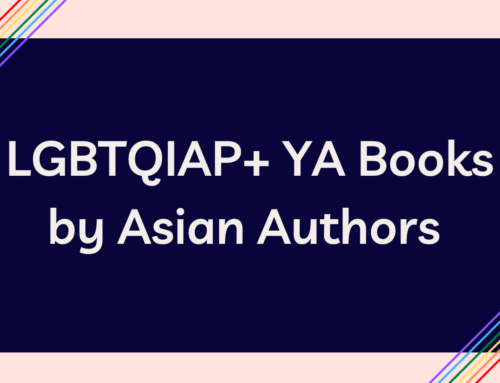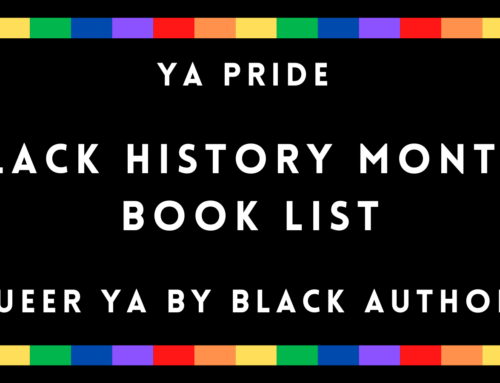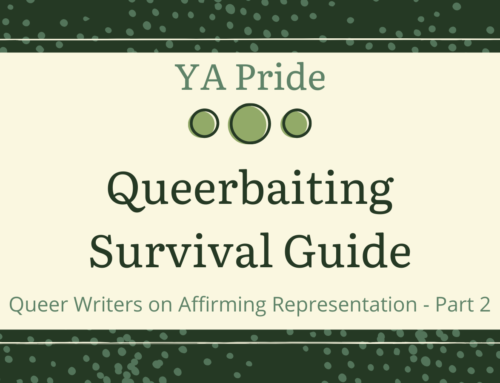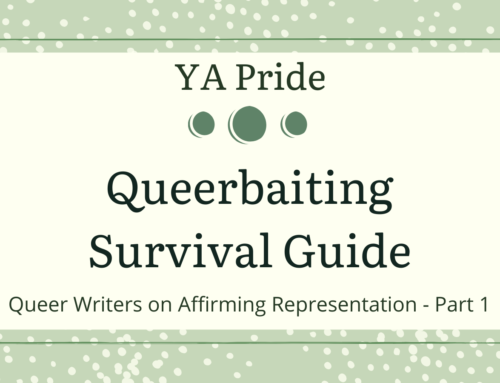 When I read Ashley Herring Blake’s How To Make A Wish last year, I knew it would become one of my favorite contemporaries of 2017. It’s almost Sarah Dessen-ish in feel, with an openly bisexual protagonist named Grace you just can’t help but root for. Throw in messy, complicated family dynamics and a gorgeous setting and you’ve got an absolutely wonderful book.
When I read Ashley Herring Blake’s How To Make A Wish last year, I knew it would become one of my favorite contemporaries of 2017. It’s almost Sarah Dessen-ish in feel, with an openly bisexual protagonist named Grace you just can’t help but root for. Throw in messy, complicated family dynamics and a gorgeous setting and you’ve got an absolutely wonderful book.I’m so thrilled we got to ask Ashley about How to Make a Wish, and I know you’ll enjoy her answers about this wonderful book. Be sure to get it when it comes out Tuesday!
What inspired you to write HTMAW? First and foremost, this book was born out of my desire to see more stories with bisexual main characters. There are a lot of pieces of me written into Grace’s story, but more than anything, I just wanted to write a book in which bisexual teens—or teens who feel they fall somewhere other than the binary—could see themselves. I wanted to show on-the-page sex between two girls, give teens hungry for those kinds of healthy interactions a place to start or a place to find comfort. I love Grace’s story, everything about her finding herself and breaking free from her mother, but before anything else, Grace is the bisexual character of my heart.
We all know writing is such an intensely personal process, particularly with regards to a character’s identity? How much of yours does Grace share, and what was it like putting that on the page? I envy Grace in many ways, mostly because she’s seventeen and already has a firm grip on who she is. I fully believe that sexuality is fluid, so I’m not saying that the way in which Grace identifies might not someday change, but during the course of this story, she’s all “I’m bisexual, deal with it,” and I absolutely love that. That was not me in high school. However, that is me now, but the way I saw girls was very confusing. You see a little bit of that in the book when Grace talks about how she realized she was bi, especially the part about how she thought the way she saw girls was the way all girls saw girls, when, in face, it wasn’t. That is so, so me. Also, I was religiously conservative in high school, so, for my personal experience, that inhibited me from really exploring the conflicting feelings I’d had about girls for years, which Grace doesn’t deal with. But, the ways in which Grace discovered her own identity are very similar to my own journey—I just went on mine seventeen years after she did.
One of my absolute favorite aspects of the book is the complicated relationship Grace has with her mother, Maggie. Were those parts difficult to write? They were. They took a lot of listening to people who have been through very complicated and, in some cases, traumatic relationships with a parent. I did not have such a tumultuous relationship with either parent, so there was a lot of blog-reading and asking friends questions. I would definitely say that all the parts during which I cried while writing were Grace and Maggie moments.
Both Grace and Eva are involved with the arts—Grace with music, and Eva with dance (which I absolutely love.) Other than writing, do you do anything artsy? I do! I’ve sung for most of my life and even entered college as a voice major, but changed my mind before my first semester started. I wasn’t a fan of singing opera at the time and didn’t want to spend four years doing so. Instead, I sang my own stuff and joined a small singing group and taught myself guitar. After college, I was part of a duo—myself and another girl—and we both played guitar and wrote songs. We traveled around and avoided adulthood for a while doing this, made an album, and moved to Nashville, which is how I ended up in Tennessee. I still sing, but the singer/songwriter life was very much not for me, so I’m much happier pursuing writing than full-time singing. The love interest in my 2018 book, Girl Made of Stars, Charlie, is a singer-songwriter, and I pulled on a lot of my experience to write her.
There’s such a need for books like this, that validate bisexual identity with representation on the page. What is the importance of books like this for teens? I’ve already heard from a lot of teen who claim this is the first book in which they’ve ever seen themselves. Mine isn’t the first with a bi main character, of course, but there aren’t a lot, so the chances of someone picking this one up and it being a first for them are pretty good. I hope that changes. I hope, in the future, there are a ton of bi books to choose from, as well as every letter on the queer spectrum, but we’re not there yet. So, every book that does exist bears the weight of being one of the few right now. The stakes are higher to provide good, helpful, comforting, empowering rep because there just aren’t that many books. If I had had a book like mine as as teen, or a book like Tess Sharpe’s Far From You, which was my first read of a bi main character, it could’ve been life-changing. I’m not saying my book has the same potential but…well, yes I am. It does have that potential and I think all books written by marginalized writers have the same potential. Kids are hungry to see themselves. To see they are okay. To see they are valid. To see they are not erased. To see they are not killed. To themselves empowered and kicking ass and loving and being loved and having sex or not having sex. We’re all hungry for that. The need to feel valid is ageless, but it’s particularly important for kids who have less power and less resources at their disposal.
Have you ever stolen someone’s garden gnomes? Ha, unfortunately not, but I have rolled many houses and snuck out of my house many a night.
What’s next from you? As I mentioned before, I have another YA coming out in 2018, Girl Made of Stars, which features a bisexual main character and a genderqueer love interest. It’s about a girl who’s twin brother is accused of rape, so it’s pretty heavy. I also have a middle grade book coming out in 2018, Ivy Aberdeen’s Letter to the World, and I really think it’s my favorite thing I’ve ever written. It’s about a twelve year-old girl whose house is destroyed by a tornado and, in the aftermath, she develops feelings for another girl at school. It’s so, so queer and I love it. More than that, I really hope it finds the right middle grade hands. 🙂
